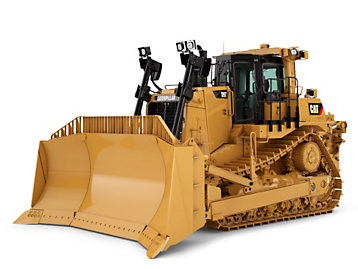Welcome to the latest edition of our blog on Heavy Equipment Articles, where we dive deep into the future of construction technologies and heavy equipment advancements in 2024. This year is shaping up to be a revolutionary period for the construction industry, marked by a blend of innovation, sustainability, and efficiency. Let’s explore the most impactful trends that are redefining the sector.
Modular Construction: A Game Changer
The rise of modular construction is more than a trend; it’s a transformation. This method involves prefabricating components in a factory setting and then assembling them on-site. The driving force? A critical shortage of skilled labor and a push towards cost-effective solutions. Modular construction isn’t just about efficiency; it’s about reimagining the building process for the 21st century.
The Digital Duo: BIM and CAD
Building Information Modeling (BIM) and Computer-Aided Design (CAD) have become the backbone of modern construction planning. BIM’s real-time collaborative framework and CAD’s detailed modeling capabilities are revolutionizing how we design, build, and operate structures. These tools are no longer optional; they are essential for any construction project aiming for precision and efficiency.
Augmented Reality: Visualizing the Future
Augmented Reality (AR) in construction isn’t just a fancy gadget; it’s a critical tool for accuracy and safety. Imagine visualizing a completed project on an empty site or identifying potential hazards before they become problems. AR is making these scenarios a reality, enhancing everything from project planning to worker safety.
Robotics and Automation: The New Workforce
Robots in construction are not replacing humans; they are augmenting our capabilities. From precision tasks like bricklaying to heavy lifting, robotics is addressing labor shortages and enhancing safety. The integration of robotics in heavy equipment is not just about doing things faster, but also smarter and safer.
Lean Construction: Maximizing Value, Minimizing Waste
Lean construction is about doing more with less. It’s an ethos that emphasizes value and efficiency at every stage of construction. By streamlining processes and enhancing collaboration, lean construction is setting new standards for project delivery and sustainability.
Software Solutions: The Digital Backbone
Construction management software has become the digital backbone of the industry. These platforms are not just about project management; they cover a spectrum of needs from HR to inventory management. In an industry where margins are thin and timelines tight, these software solutions are indispensable.
Building Smart Cities
The concept of smart cities is no longer futuristic. It’s happening now. These projects, blending technology with urban planning, are setting new standards for sustainability and livability. From Masdar City in the UAE to Hudson Yards in New York, smart cities are the living laboratories of the future.
Self-healing Concrete: The Material of Tomorrow
Imagine a material that can repair its own cracks and deterioration. Self-healing concrete is turning this dream into a reality. This innovation could significantly extend the lifespan of structures while reducing maintenance costs.
Cloud and Mobile Tech: Anywhere, Anytime
Cloud and mobile technologies are reshaping how we communicate and manage construction projects. These tools enable seamless collaboration and data sharing, ensuring that everyone, from the office to the job site, is on the same page.
The AI Revolution in Construction
Artificial Intelligence (AI) in construction is more than just a buzzword. It’s about predictive analytics, risk assessment, and process automation. AI is transforming the construction landscape, making projects more efficient, safer, and cost-effective.
Drones: The Eyes in the Sky
Drones are no longer just a novelty; they are a necessity. Their ability to monitor progress, conduct surveys, and even transport materials is making construction sites more efficient and safer.
The year 2024 marks a significant leap in the construction industry’s journey towards digitalization, sustainability, and efficiency. These technologies are not just changing how we build; they are redefining what is possible in the world of construction and heavy equipment. Stay tuned to our blog for more insights and updates in this exciting and ever-evolving field.










